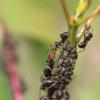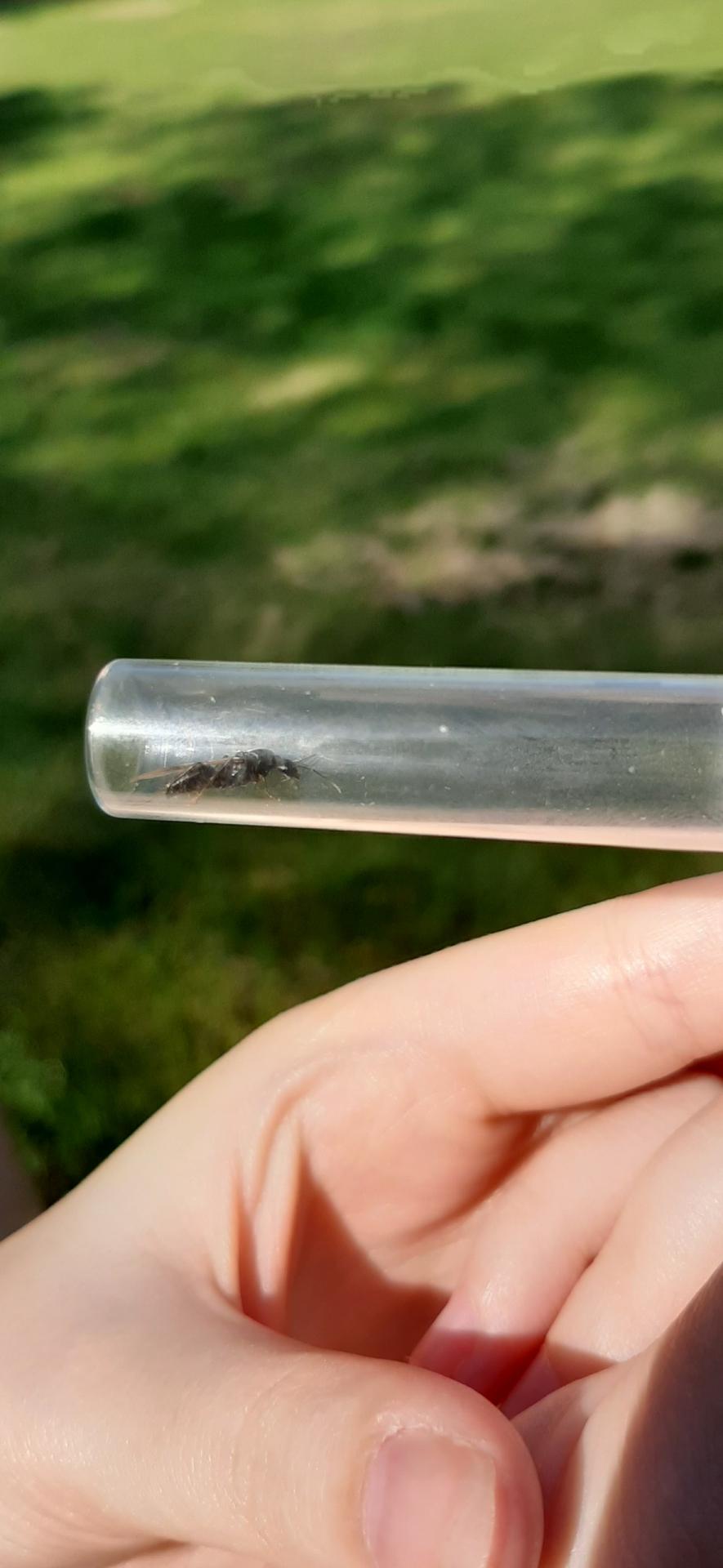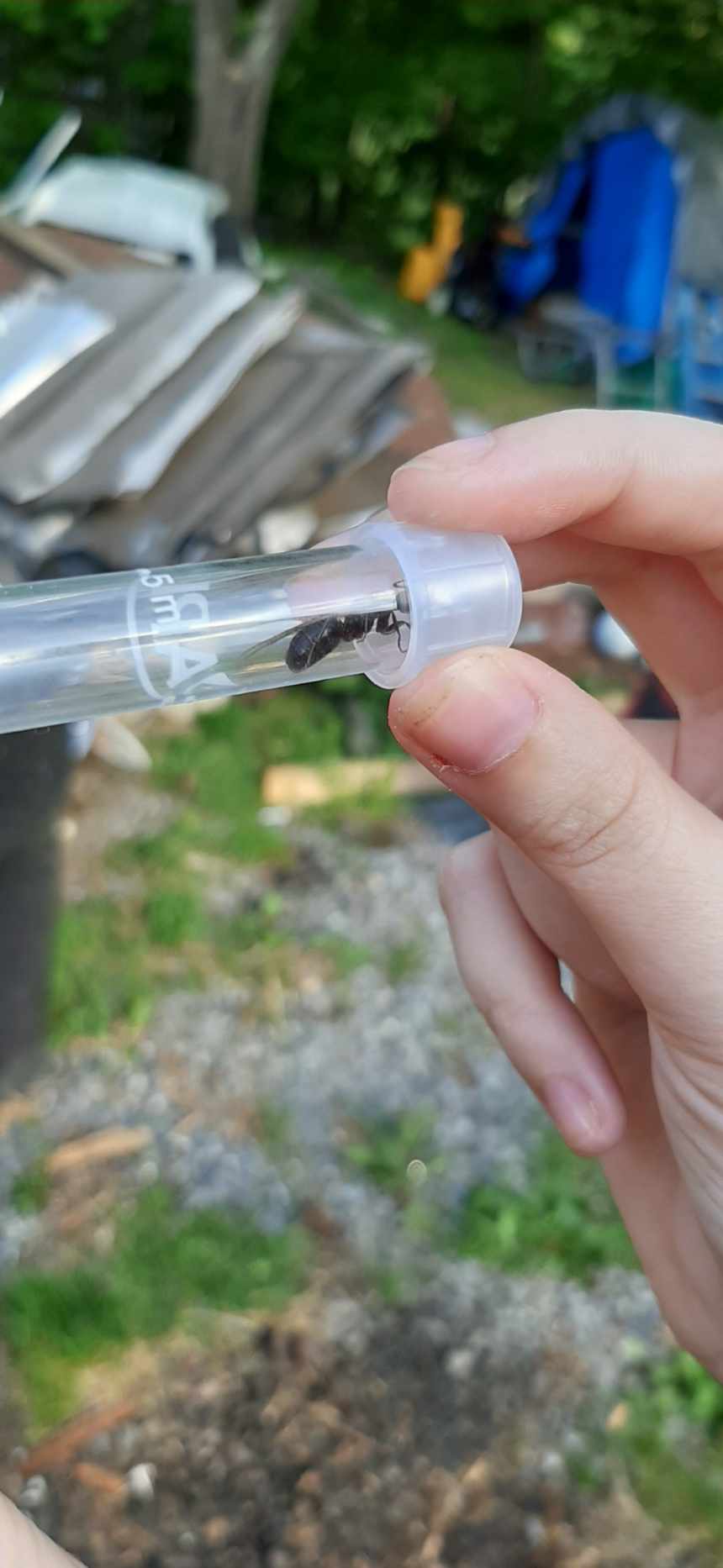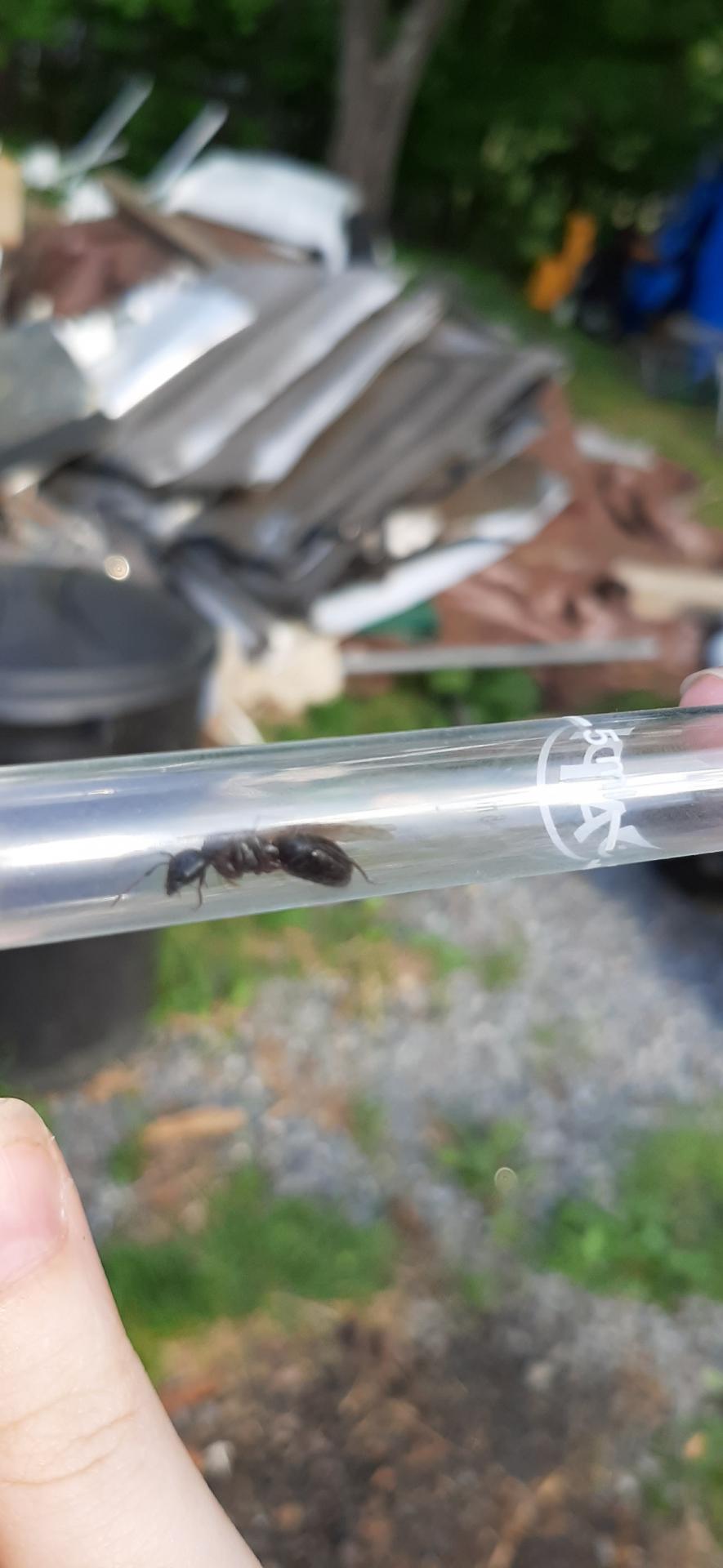I caught what I believe to be 1 male and 2 female large alates. I will list specifics on the male first and then the females.
MALE
1. Location: Fitchburg Massachusetts
2. Date of collection: May 26, 2020
3. Habitat of collection: Deciduous Forest
4. Length: 11 or 12 mm (Keeps moving)
5. Coloration, hue, pattern and texture: Dark brown- Black coloration. Tan wings. Long legs.
6. Distinguishing characteristics: TINY head. Pointy booty.
7. Anything else distinctive: Restless. Keeps flipping upside down in the test tube. I don't think he can grip glass very well.
8. Nest description: N/A
9. Nuptial flight time and date: Didn't Witness
QUEEN #1
1. Location of collection: Fitchburg Massachusetts
2. Date of collection: May 26, 2020
3. Habitat of collection: Deciduous Forest
4. Length: 16 mm
5. Coloration, hue, pattern and texture: Dark brown- Black coloration. Tan wings. Long legs. Brown stripes on the booty
6. Distinguishing characteristics: Round booty.
7. Anything else distinctive: Calm
8. Nest description: N/A
9. Nuptial flight time and date: Didn't witness
QUEEN #2
1. Location of collection: Fitchburg Massachusetts.
2. Date of collection: May 26, 2020
3. Habitat of collection: Deciduous Forest
4. Length: 18 mm
5. Coloration, hue, pattern and texture: Dark brown- Black coloration. Tan wings. Long legs. Brown stripes on the booty
6. Distinguishing characteristics: Round booty.
7. Anything else distinctive: Calm
8. Nest description: N/A
9. Nuptial flight time and date: Didn't witness
The females were found a few feet from eachother. The male was at the other side of the house about 150-200 feet away from the females. I plan to release the male in case he hasn't mated. I just want to know what he is.
Edited by SabbyMae, May 26 2020 - 1:55 PM.



















